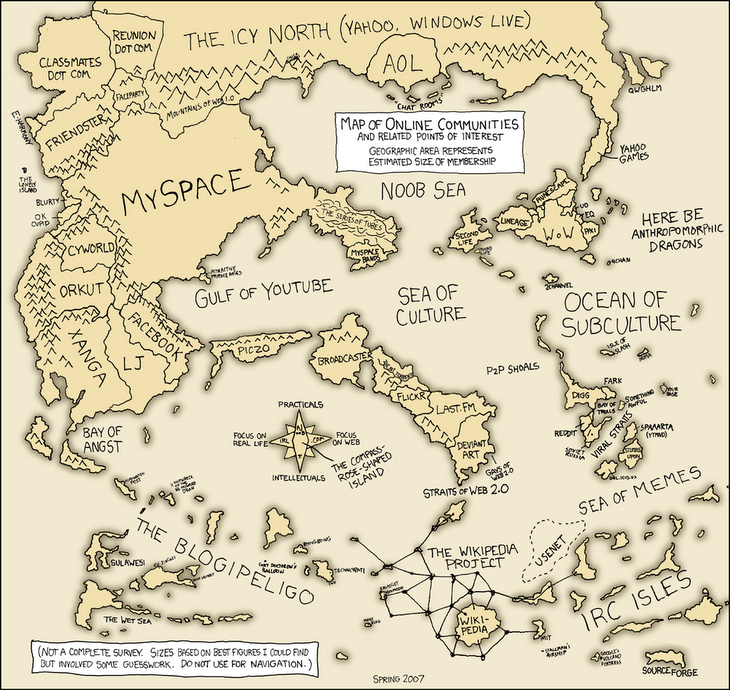-In the era of the Beat generation and the Merry Pranksters, the social ideals of the New Communalists and the products of the Cold War technocracy were merged in the San Francisco LSD scene. Trips Festivals created spaces in which the technological and the social came together in ecstatic communal experiences marked by lights, images, and music brought about through electronic media, as well as LSD. These experiences integrated those who attended into a single techno-biological system:
Far from asserting direct control over events, he [Brand] had built an environment, a happening, a laboratory. He had set forth the conditions under which a system might evolve and flower, and he had stocked the biological and social worlds of those who entered that system with technologies that allowed them to feel as though the boundaries between the social and the biological, between their minds and their bodies, and between themselves and their friends, were highly permeable. He had helped found a new tribe of technology-loving Indians, artistic engineers of the self.
---
Chapter 3: The Whole Earth Catalog as Information Technology
-Brand's desire to merge systems theory and New Communalist politics resulted in the creation of the Whole Earth Catalog, a disperse project offering products such as books, camping gear, and blueprints for houses and machines for those migrating to form communes in the hills of New Mexico and Colorado.
-The Catalog reflected both the technological and scientific achievements of the time as well as the acid-drenched, Eastern religion-inspired hippie movement. In addition, the contributions of its readers established a network forum enhanced by mobility between several countercultural, academic, and technological communities.
-Collaboration of disparate, disembodied communities, small-scale personal and informational technology that supported the development of individual consciousness and ecstatic communion.
We are as gods and might as well get good at it. So far, remotely done power and glory- as via government, big business, formal education, church- has succeeded to the point where gross defects obscure actual gains. In response to this dilemma and to these gains a realm of intimate, personal power is developing- power of the individual to conduct his own education, find his own inspiration, shape his own environment, and share his adventure with whoever is interested. Tools that aid this process are sought and promoted by the Whole Earth Catalog (Brand, inside cover of the Catalog).
---
In comparing the Whole Earth Catalog to current Internet culture, the following snippets are particularly of note:
-both a reflection of and a doorway to the world
-nomadic technocratism
-interactive elements increase commitment, as well as involvement.
-by publishing financial accounts, Whole Earth was also viewed as "open source"
-appropriation by the subculture(s) for the purposes of transformation of the superculture- does this succeed? Dominated by white, affluent, educated population...





